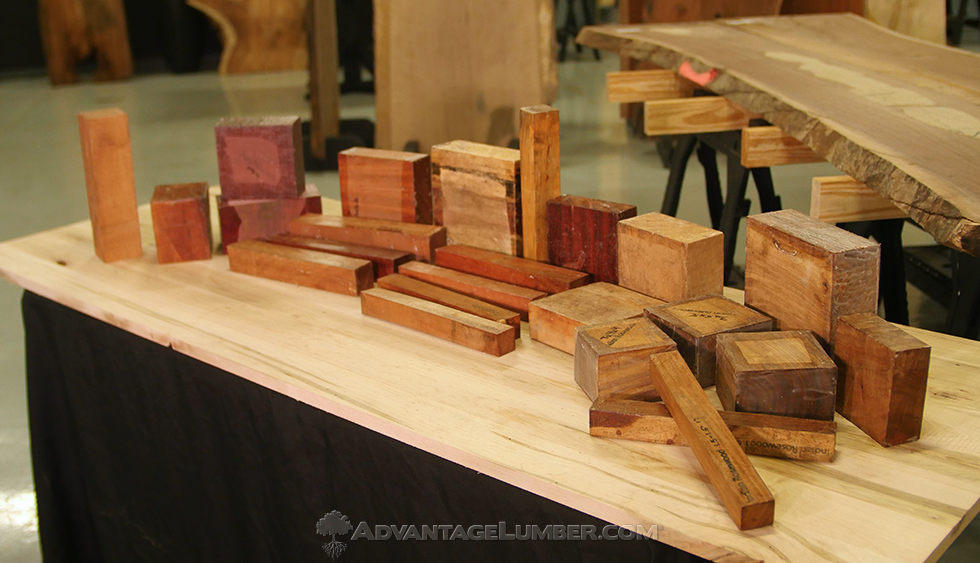- Scientific Name
- Brosimum rubescens (syn. B. paraense)
- Common Name(s)
- Bloodwood, Satine
- Distribution
- Tropical South America
- Average Dried Weight
- 66 lbs/ft3 (1,050 kg/m3)
- Specific Gravity
- Basic: .90, 12% MC: 1.05
- Janka Hardness
- 2,900 lbf (12,900 N)
- Modulus of Rupture
- 25,290 lbf/in2 (174.4 MPa)
- Elastic Modulus
- 3,013,000 lbf/in2 (20.78 GPa)
- Crushing Strength
- 14,310 lbf/in2 (98.7 MPa)
- Shrinkage
- Radial: 4.6%, Tangential: 7.0%, Volumetric: 11.7%, T/R Ratio: 1.5
- Appearance
- Heartwood is a bright, vivid red. Color can darken to a darker brownish red over time with exposure to light. Applying a thick protective finish, and keeping the wood out of direct sunlight can help slow this color shift. Well defined sapwood is a pale yellowish color, though given the typically large trunk diameters, it’s seldom seen or included in imported lumber.
- Texture
- Grain is usually straight or slightly interlocked. Has a fine texture with good natural luster, and is also somewhat chatoyant. Endgrain: Diffuse-porous; large pores, few; solitary and radial multiples of 2-3; tyloses and other mineral deposits common; parenchyma winged and confluent; narrow to medium rays, normal spacing.
- Rot Resistance
- Reported to be very durable, and resistant to most insect attacks.
- Workability
- Bloodwood is extremely dense, and has a pronounced blunting effect on cutters. The wood tends to be brittle and can splinter easily while being worked. Those persistent enough to bear with the difficulties of working with Bloodwood to the finishing stage are rewarded with an exceptional and lustrous red surface.
- Odor
- Has a mild scent when being worked.
- Allergies/Toxicity
- The wood’s dust has been reported as occasionally causing effects such as thirst and salivation, as well as nausea. Can also cause skin irritation.
- Pricing/Availability
- Widely available in wide boards, as well as smaller turning squares and blanks.Many boards exhibit only a dull reddish brown coloration; truly blood-red pieces are the ideal. Prices are moderate to moderately high for an imported hardwood.
- Sustainability
- This wood species is not listed in the CITES Appendices or on the IUCN Red List of Threatened Species.
- Common Uses
- Carvings, trim, inlays, furniture, guitars, knife handles, and turned objects.
- Comments
- Traditionally known by the name Satine, it’s no wonder that the wood (now more commonly called Bloodwood) has grown so popular as an imported wood species. Though it poses some challenges in working characteristics, its hardness, strength, and coloration make this a crimson favorite.


